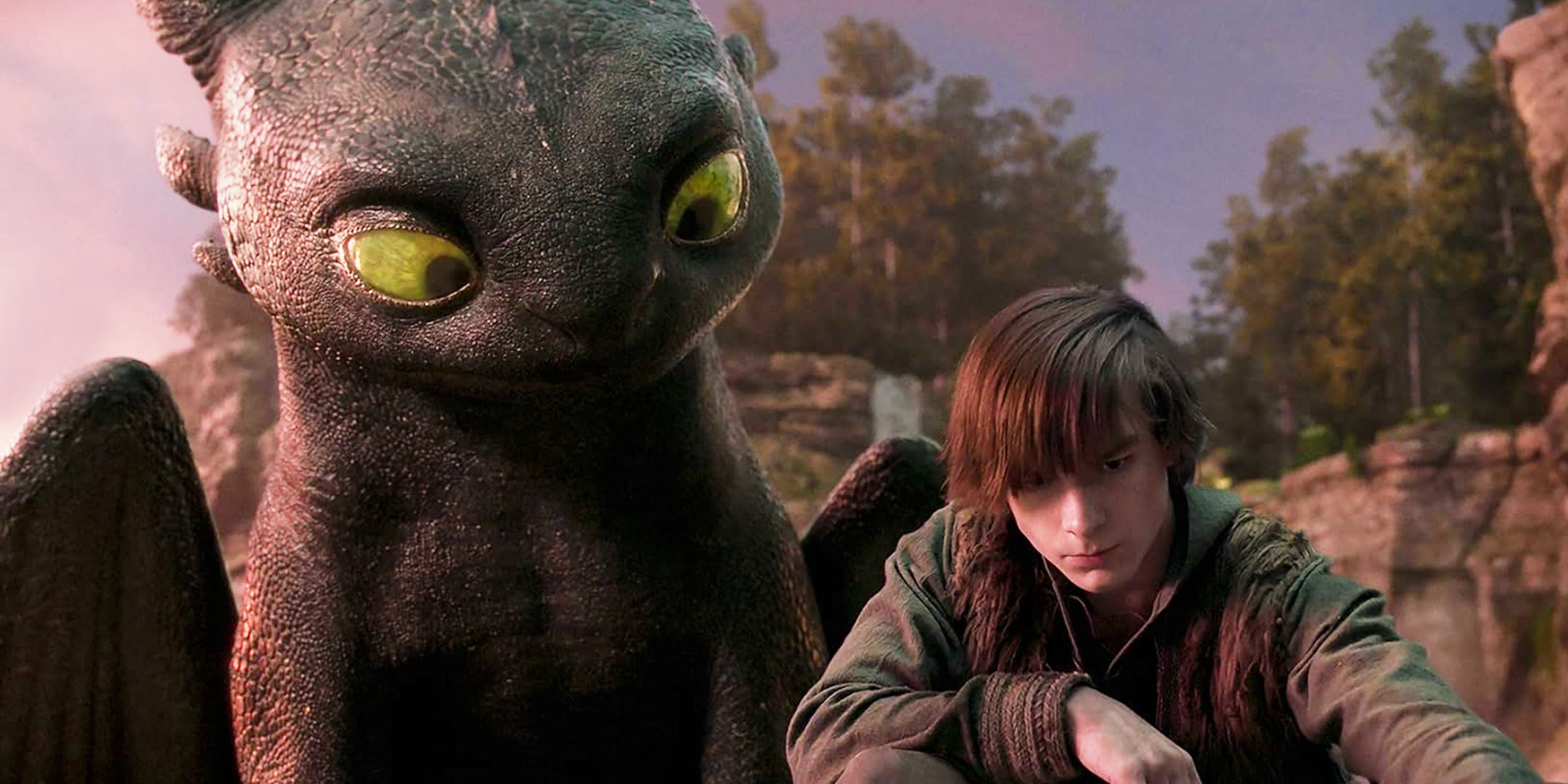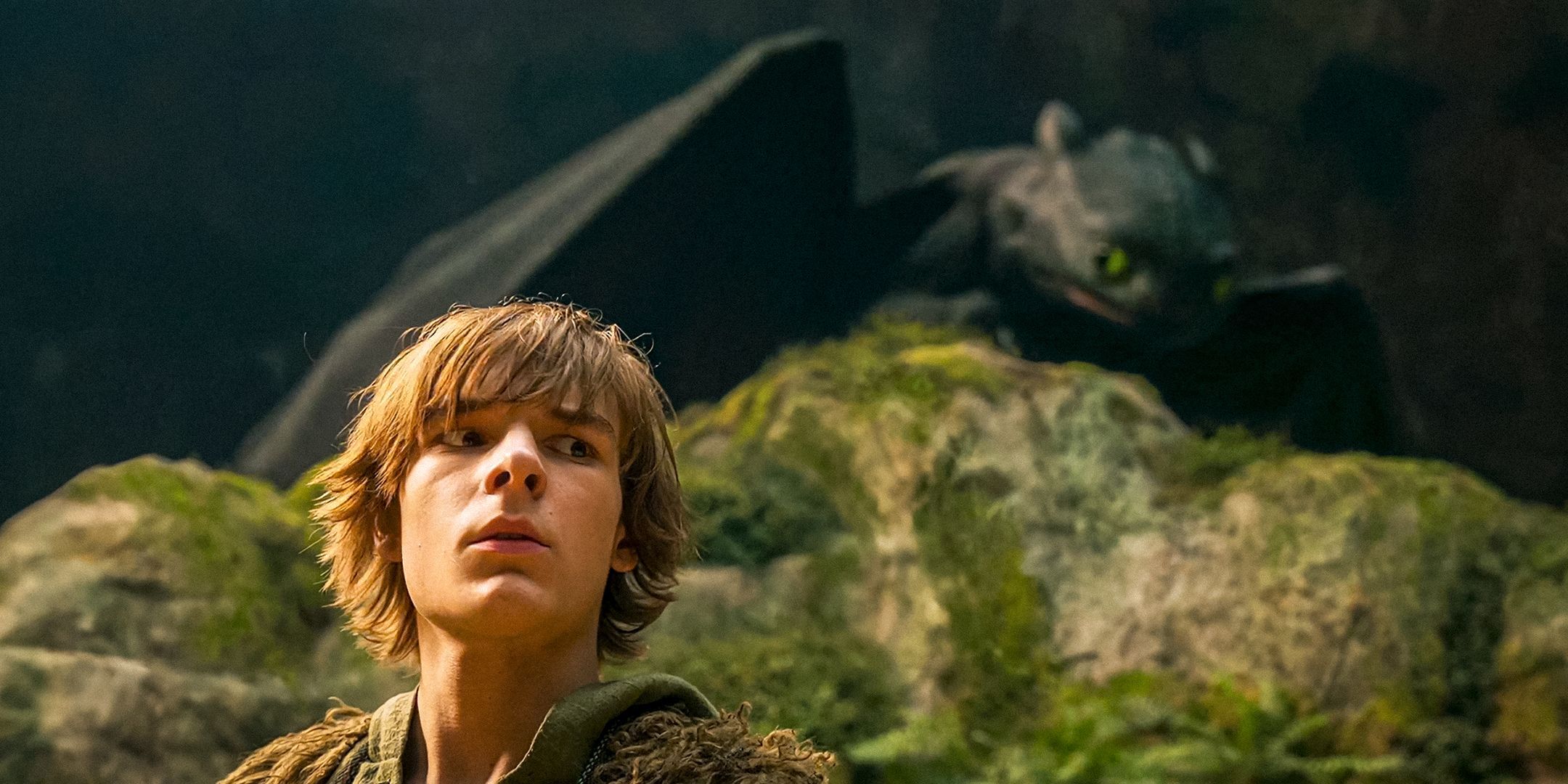How to Train Your Dragon Production VFX Supervisor Christian Manz broke down some of the biggest challenges and joys of bringing Toothless to life again on the big screen. Based on the 2010 animated film of the same name, How to Train Your Dragon adapts the DreamWorks movie into live-action thanks to a deft mix of practical effects, strong performances, and impressive VFX. The dragon designs in How to Train Your Dragon are amazing to look at on their own, let alone how they interact with one another and the real-life performers.
The behind-the-scenes efforts to make the film’s effects seamlessly flow with the live-action material is crucial to the visual success of the remake. During an interview with Screen Rant, Christian Manz discussed the process of using practical puppets to help give the creatures in How to Train Your Dragon a realistic chemistry with actors, how the original film’s designs served as a unique blueprint for the remake’s visual, and the process of entire sets to represent some of the film’s most terrifying dragons.
How The Live-Action Toothless Compares To The Animated Original
“The Problems We Had To Solve Were Figuring Out How To Elevate It. How Could We Make It Better?”
According to Christian Manz, the heavy visual lifting of designing Toothless for How to Train Your Dragon had already been solved by the first film. The dragon already had his look, his story, and even his accompanying music figured out, giving the VFX artists on the How to Train Your Dragon remake a great starting place that most artists don’t get to utilize. “The fact that we had something to work from that we already knew was pretty cool,” Manz explained.
“The problems we had to solve were figuring out how to elevate it. How could we make it better? That was the challenge set by the studio right in the very beginning. We had a three-month period, just working on Toothless, to get the film green-lit. Peter Kramer, President of Universal, had kicked around the idea with Dean of bringing us in to figure out how Toothless could work as a real thing.“
Although the initial steps were easy enough, the actual act of recreating Toothless’ animal nature and natural flight for a realistic-looking effect was trickier. Ultimately, Manz embraced having a “amazing blueprint” to work from and relied on the strength of the story to help guide the look of Toothless. “I think it’s a really good story, which is why it deserved to be brought to life like this. Maybe 15 years ago, I’m not sure this could have been done in quite the same fidelity, but it’s a really good story more than anything else. It’s the wish fulfillment of riding a dragon when you see it look like real life.“
Puppets Were The Key To How To Train Your Dragon’s Weighty Effect
“It’s Like A Theater Production In Itself”
Having worked on plenty of other blockbuster films with supernatural creatures (such as the Fantastic Beasts and Where to Find Them series), Christian Manz’s experience bringing these fantasy worlds to life was key to How to Train Your Dragon‘s visuals. “The innovation that we did on the first Fantastic Beasts was that we used puppets. Tom Wilton and his team from the National Theater’s War Horse stage show. They know how to use them. They gave a performance to the creature on set.” This same approach proved key to the production of How to Train Your Dragon.
The puppets were there to enhance the performance of the live-action actors while creating a natural space for the eventual VFX creation. Noting that they would use the animation of scenes like the flight cycle, Manz explained that the real-life puppets were crucial to “educating their performances… having a real-life connection with Mason and the other actors on set was absolutely key to me. In my experience, when you have an actor who isn’t connecting with the effect, you can tell. It doesn’t matter how good the render or the animation is, how faultless everything is.
“You can tell that there’s nothing there because they’re not connected to it. It’s obviously a nightmare for the guys who have to paint [the puppets and the performers] out, but Tom was very used to trying these sorts of gymnastic poses, trying to be as small as possible.” One of the things that impressed Manz the most about his collaborators was their ability to use mouth/ear/eye plates that could be swapped out and moved on the fly.
“What’s amazing is what they could create on the day. It’s like a theater production in itself. You really feel the presence of that creature, because they’re doing the noises and making the moves and finding something with the actor. It’s just like you would have if it were two humans performing together, and that’s what makes it feel real at the end of the day.”
The Challenges Of Bringing Dragons To Life
“Now We Can Make Them Feel Like They’re Real”
The world of How to Train Your Dragon features plenty of inventively designed and unique-looking creatures, each with their own visual flair and sense of personality baked into their design. While that’s a benefit in terms of giving the VFX team plenty of great material to work with, it also presented challenges to Manz and his team. “I think Toothless was the trickiest because he was the one who really carried the film,” Manz explained, citing how the emotional arc of the film relies heavily on Toothless and his interactions with other characters.
“What’s unique about this franchise is that [the dragons] all have their different personalities, and we could push their designs more. I think they were definitely more cartoon-y looking in the animated film. Now we can make them feel like they’re real.” Some of these dragons, like the mᴀssive Red Death at the end of the film, proved to be extra challenging due to their sheer scale. “That was the furthest we pushed the design. She is completely different-looking. We made her enormous.” Red Death even broke their own approach, as the creature was too big to make a puppet of.
“Stunts wanted to do something, so I worked out for them that the Red Death’s feet were 50-foot squares. That’s where Far Side came in.” Far Side, an app based on Unreal Engine that allows for easy experimentation on visual composition for sH๏τs, became “really useful for the camera department, it became useful for Dean, it became useful for all of us” during production. Working with the Art Department and SFX Supervisor Terry Palmer, the team was able to create real-life props and sets recreating the Red Death’s jaw and snout that fit alongside the more fantastical effects.
“Nico was there with her axe, hitting fake teeth. You needed her to be hitting those, swinging that axe, and making it feel real. I remember stating there, looking at that head set, and thinking about I’ve never done done anything where parts of a creature had been represented by their own huge set pieces… there’s only a couple of sH๏τs in the film where we see all of her, because we purposefully only framed parts of her because of how big she is.“
Why There’s Room For Live-Action And Animated How To Train Your Dragon
“I Think Both Films Can Exist…”
How to Train Your Dragon has been a huge success for Universal, with the remake quickly becoming one of the highest-grossing films of the year. Even though he’s seen it so many times while working on it, Manz revealed that the movie “still makes me emotional when I watch it. It’s down to the fact that it’s a great story, there are great performances, and with Dean at the helm of all that, it’s great.” Manz reflected on the debate over adapting animated films to live-action, arguing that How to Train Your Dragon is a “great story” regardless of format.
“The audience seems to really love it.”
“Why not retell a great story in a new format?” Manz didn’t immediately believe that, though. Manz recalled how when he first spoke to Dean DeBlois about the project, “my first question was ‘Why?’ Literally, just ‘Why do you want to do this?’ I think it’s because on that first film, he and [Chris Sanders, co-director on 2010’s How to Train Your Dragon] didn’t get to make it everything they wanted it to be. It was an opportunity to do that, but also an opportunity to protect the world they created.”
“We pushed and pulled on different sH๏τs and different ideas, some stuff was in and some stuff was out, but that’s the creative process. It’s not just a cookie-cutter replica. There was a lot of work to just fit everything into filming, let alone doing all of it in post. I think that’s because we all really wanted to [make it something bigger]. The thing is, the audience seems to really love it. It’s really lovely hearing from the fans who are really enjoying this film. I think both films can exist, and it’s really nice to have them both.
How to Train Your Dragon is now playing in theaters.
Check out our other interviews for the live-action movie here:
- Mason Thames & Nico Parker
- Gerard Butler
- Nick Frost
- Dean DeBlois








